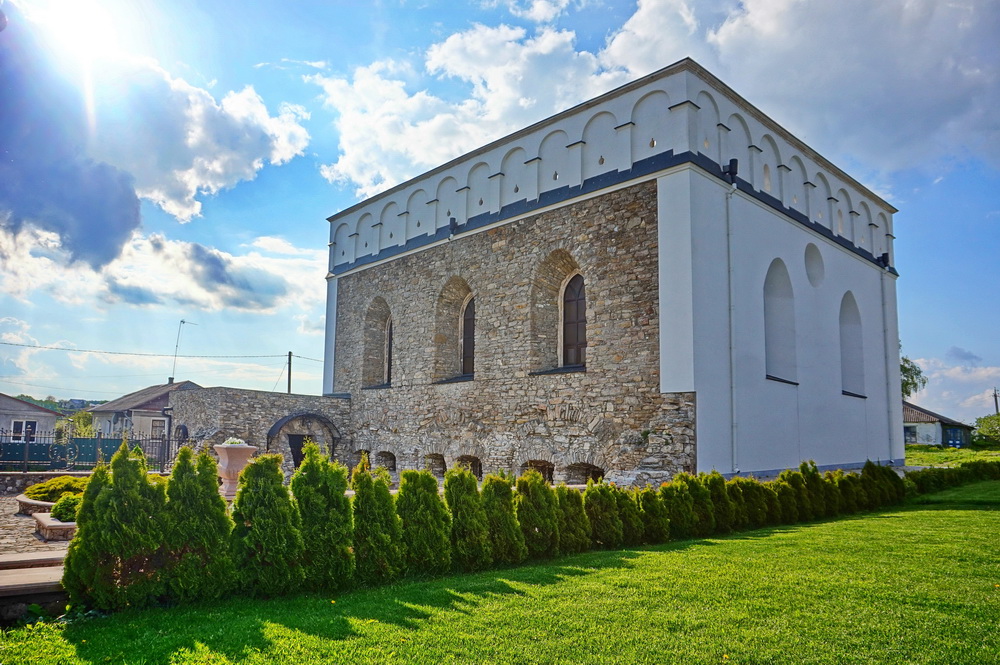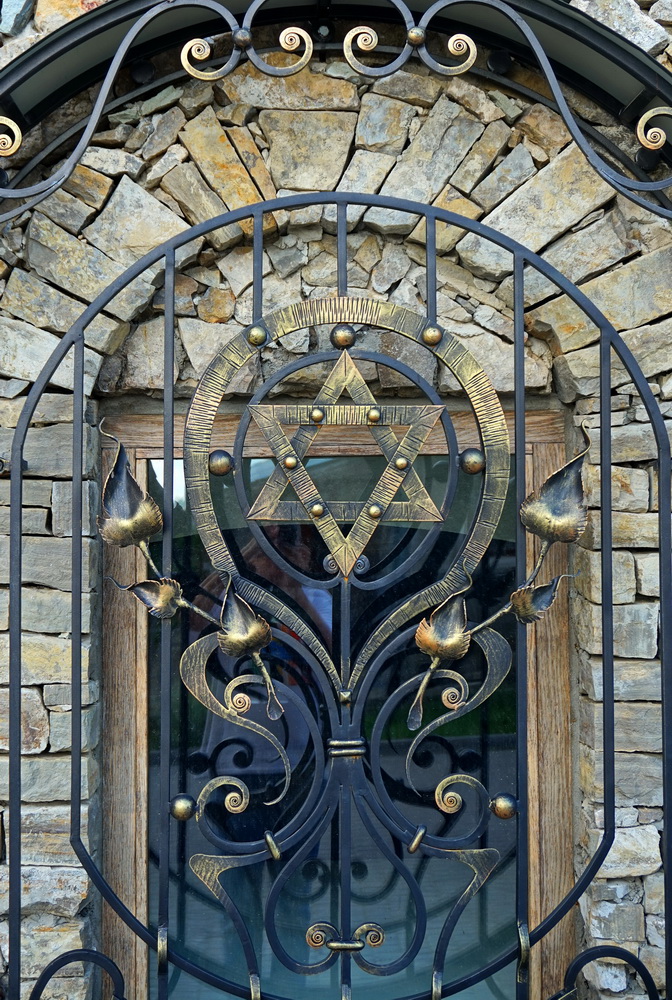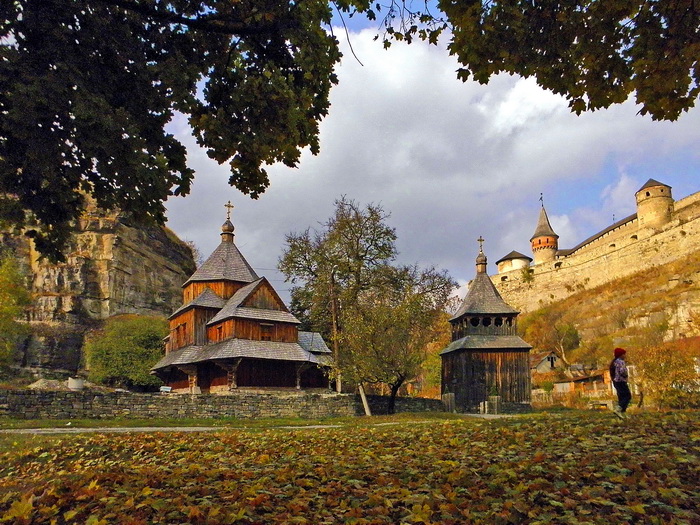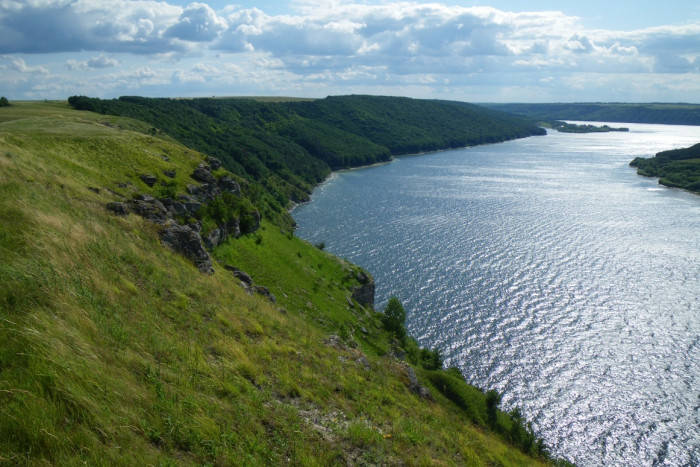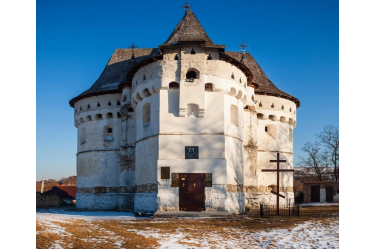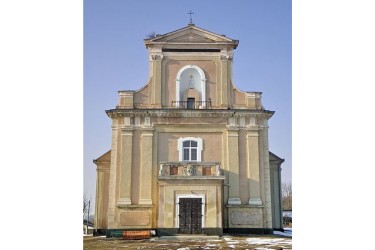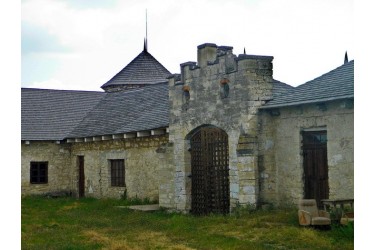I always visit this town with great pleasure. So, in May 2019 I visited Sataniv for the third time. For 9 years, while I was not here, only the defense synagogue has changed. It has been restored and it no longer looks as archaic as before. Everything else: the castle, the church, the city gate, the old Jewish Kirkut, the majestic but small Zbruch, geese and cows on its banks, wooden masonry – everything is just like a few centuries ago. Time has stopped here. Only the huge Arden Palace on the horizon – the new modern complex of the resort town of Sataniv reminds us that we are in the 21st century.

Where does such an interesting name come from?
The town of Sataniv (Khmelnytskyi region) is a famous Ukrainian climatic and balneological resort. It lies on the steep left bank of the Zbruch river at the foot of the Tovtry ridge. Here, starting from the Dnister, stretches the Trajan’s rampart, poured during the conquest of Dacia by the Roman emperor Trajan at the beginning of the II century of our era. One of the possible versions of the origin of the city’s name is associated with this period.
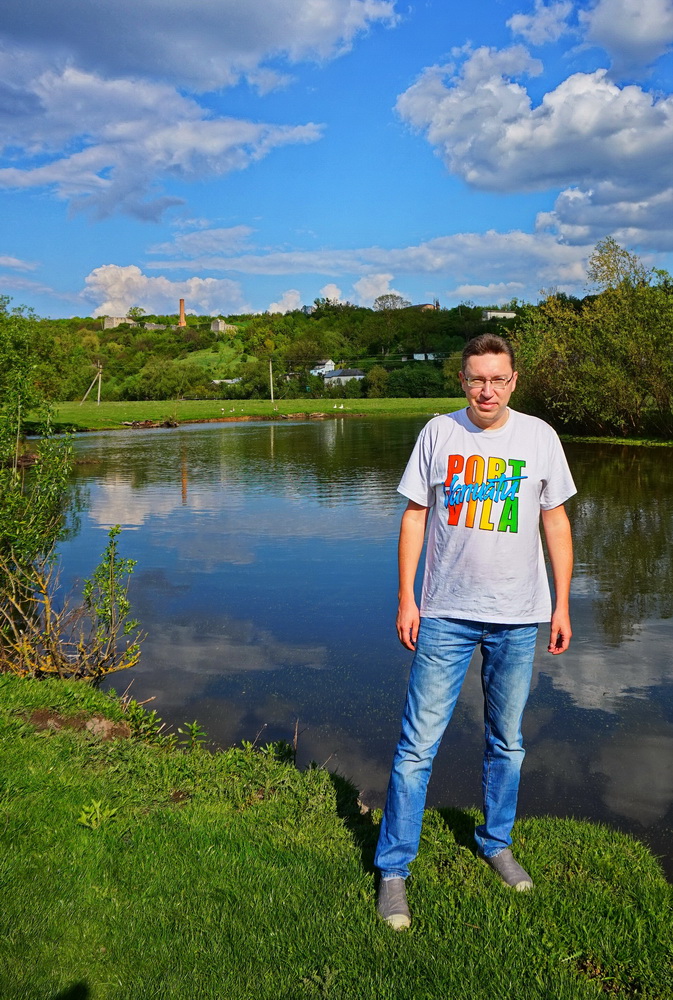
According to the legend, when in 105 A.D. the Roman Toniliy’s legion marched north of the Dnister, stopping on the high bank of the Zbruch, Toniliy asked the soldiers: “Sat an non?” (“Shall we stop or not?”). They answered firmly “Sat!” That’s where the name comes from. Of course, this version looks like just a beautiful fairy tale, and the name could have a devilish subtext: since the introduction of Christianity in Rus’, these lands have long remained a refuge for pagans.
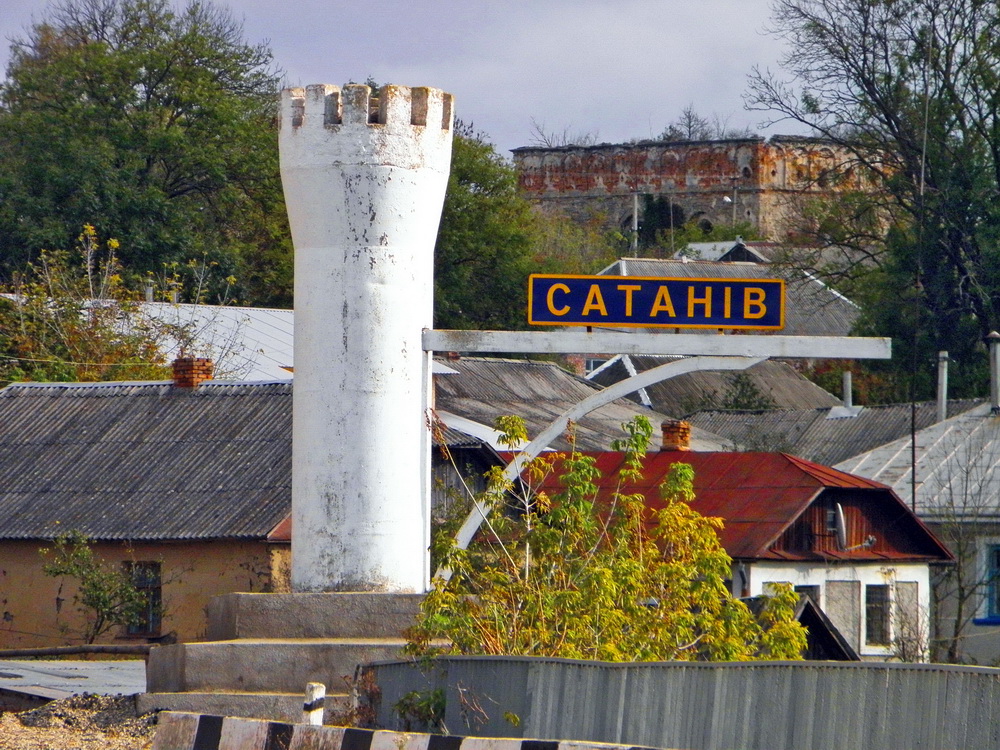
How Sataniv appeared
The first mention of the city dates back to March 3, 1404, when the Polish king Vladyslav II Jagailo presented Sataniv, along with the surrounding villages and Zinkiv, to Petro Shafranets, the son of the Krakow postoli of Peter Shafranets (the elder). For such a gift, the owner of the city had to permanently reside in the estates, had to give 6 spearmen and 12 archers on foreign campaigns, and in the event of an external threat to defend the region with all his people. In addition, the owner of the land had the right to transfer his possessions to others only with the consent of the king, and his subjects had to fulfill all duties and pay all taxes introduced since the time of the Koriatovichs.
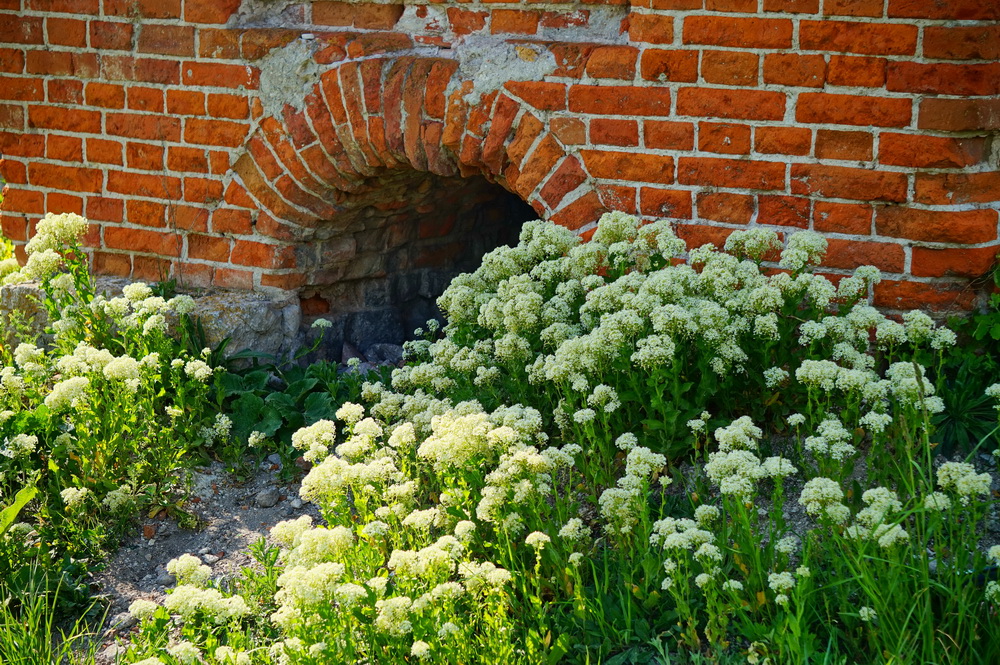
Petro Shafranets was a very close person to the king from the very beginning of his career. In 1398 – 1406 he held the position of the Krakow pidstoli, in 1406 – 1430 – the Krakow pidkomori. From 1431 to 1433 he was Sandomierz governor, and from 1433 to 1437 – Krakow governor.

Odrovonzh’s first castle and tower
The lands around Sataniv were returned to the king for a short time, and in 1431 they were transferred to the governor of Podillia Petro Odrovonzh from Sprova. To protect against the Tatars, Odrovonzh begins building a castle on the site of the old fortifications of the 14th century. The so-called Odrovоnzh’s Tower that is the oldest part of the castle in Sataniv has survived from that time to the present day. Some researchers consider it an archaic example of the fortifications of Podillia and refer to the Old Rus’ period.
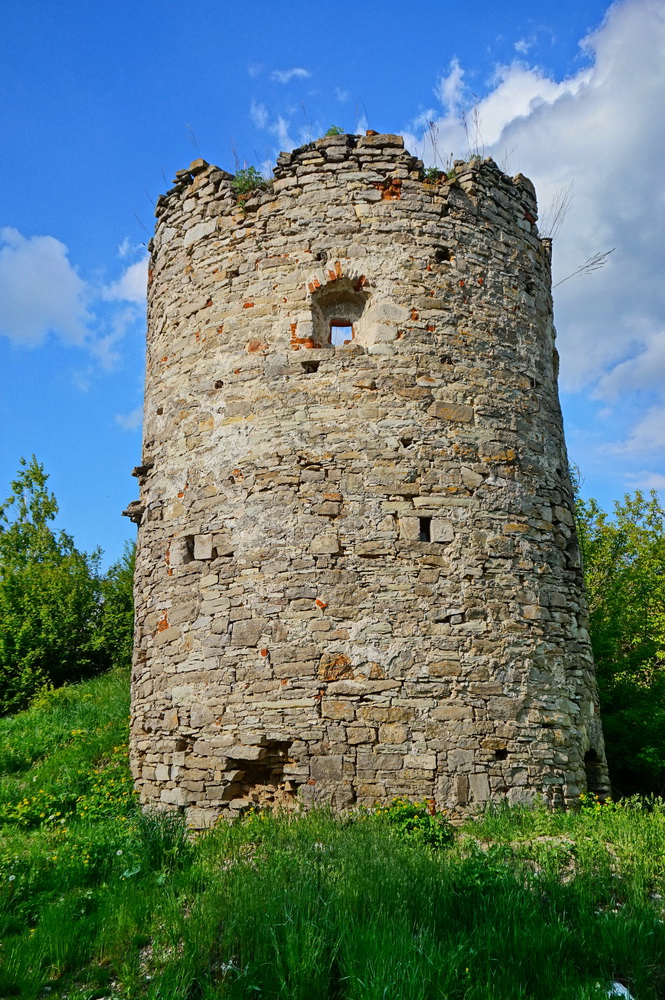
The tower stands slightly away from the main part of the castle. It is round in plan and has a diameter of 6 meters and has been preserved to a height of three floors. The loopholes have been preserved on the two lower tiers. Obviously they were adapted for archery, not firearms. The tower was adjoined by defensive walls, traces of which have survived. In its prime, the tower three-quarters of its volume faced the floor side of these walls.
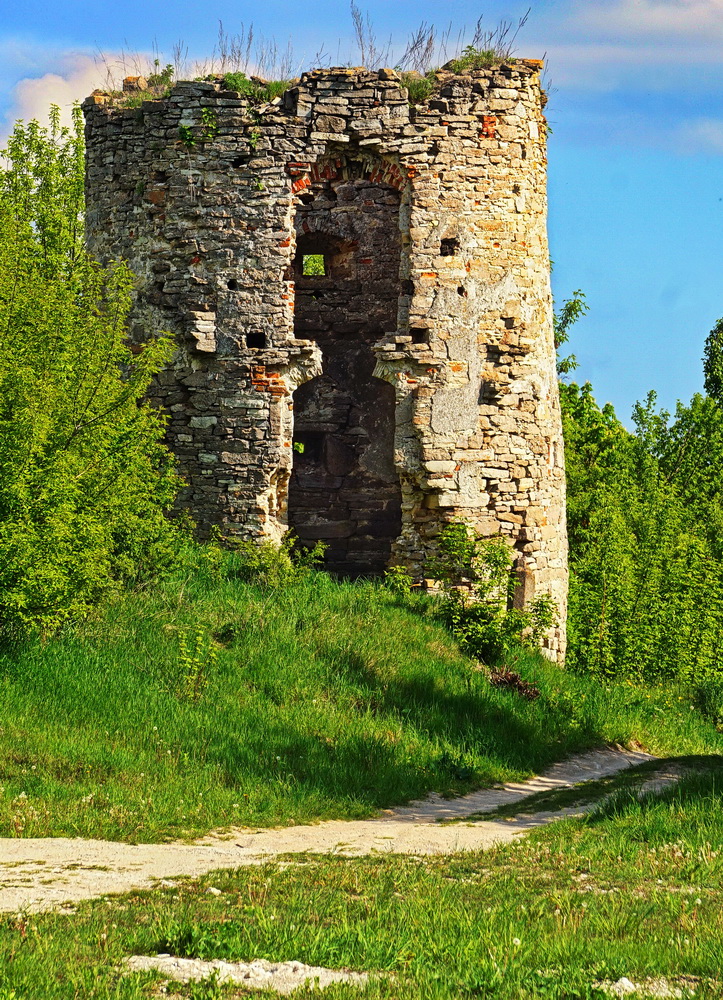
Seniavskyi in Sataniv. Castle construction
The daughter of Jan Kostka and Sofia Odrovonzh, Katherine, contributed Sataniv to her husband’s dowry, Adam Geronim Seniavskyi, who owned castles in Stare Selo near Lviv, in Medzybizh and Berezhany. At the end of the 16th century Seniavsky built a regular castle in Sataniv, which became one of the most powerful ones in Nadzbruchia.

The castle was built pentagonal in plan. Each side of the castle had an approximate length of 125 meters, 5 towers at the corners that were extended far beyond the line of the walls. The walls were double. The inner walls (not preserved) stood on a rampart and were separated from the outer ones by a moat. The height of the outer walls in some places reached up to 10.5 meters.

In 1641 the widow of Adam Geronim Seniavskyi, Katherine, procured the Magdeburg Law for Sataniv. She received from the king the right to choose the headman herself and make the final decision in all court cases. For such power, the owner was supposed to keep the city fortifications in order and provide them with weapons.
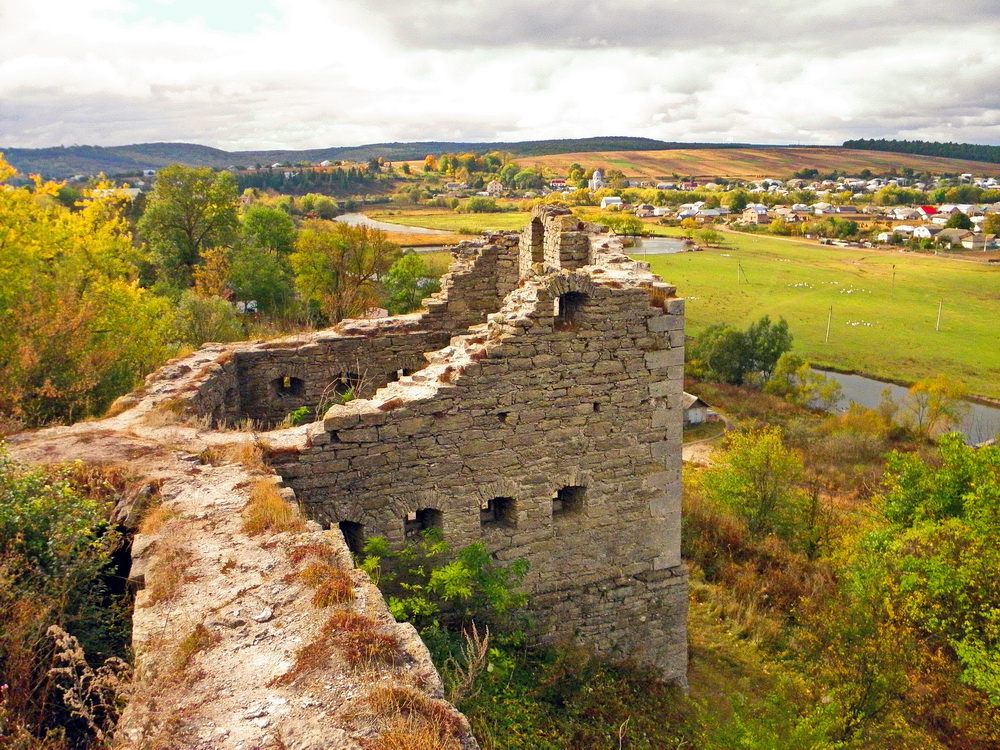
Magdeburg Law did not contribute to the development of the city for a long time. During the War of Independence, the city was repeatedly captured and destroyed by the Cossacks. In 1651 they took the castle together with the Tatars. In 1653, the Cossacks took the city without storming: Orthodox local residents themselves opened the gates for them. Then the Cossacks massacred not only the entire castle garrison, but also civilians.
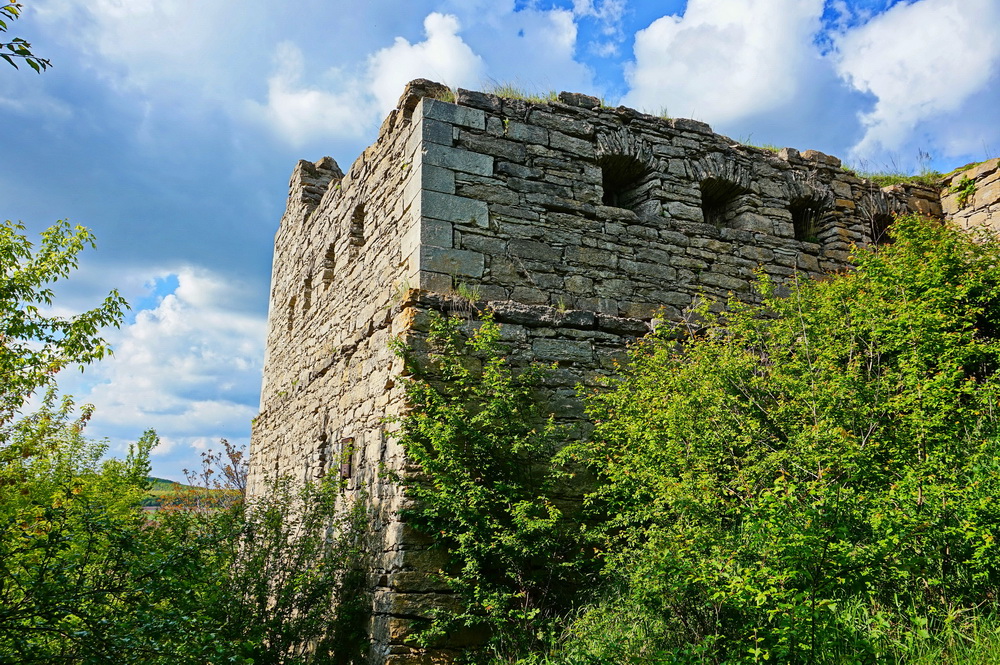
When the Polish crown hetman Martsin Kalynovskyi conquered the city, the first order he gave was to execute all Orthodox Christians in Sataniv. But the sentence was commuted, and only every tenth was executed. In memory of these events, Kalynovskyi ordered to put a memorial sign of the grieving Jesus in Sataniv. During the opening, he said: “Look, even the Lord was depressed when he saw your treason to the king.” The monument still stands on the outskirts of the village hospital.
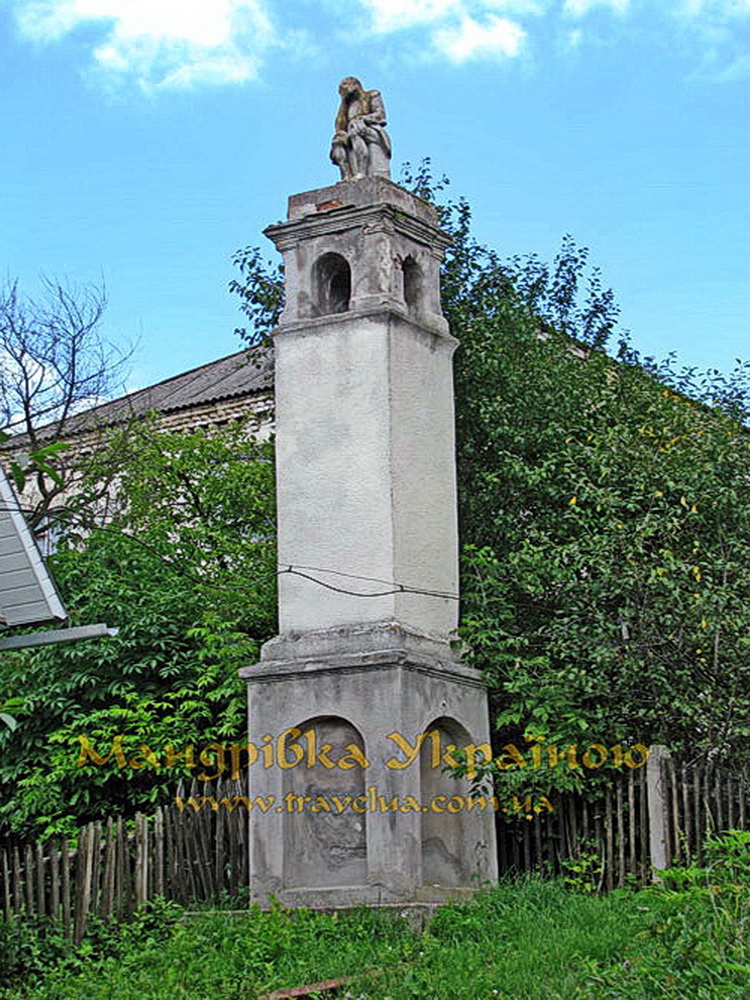 фото – Мандрівка Україною
фото – Мандрівка Україною
The Turks occupied Sataniv in 1672, but the next year the Poles recaptured the city. In 1676, the Turks, having recaptured the city, destroyed almost all of its population. During 1676-1699 years, Sataniv was under Turkish rule like all of the Podillia.
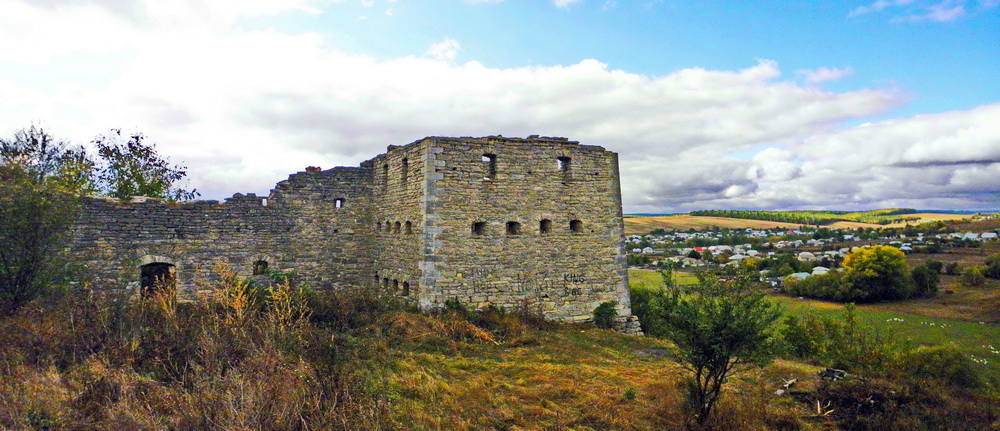
Revival after the Turkish invasion
Sataniv begins to revive and regain its reputation as a craft and trading town after the war at the beginning of the 18th century. In 1711, the city was visited by the Russian autocrat Peter I, who was returning from the Prut campaign. He was hosted by crown hetman Adam Mykola Seniavskyi. In the first half of the 1720s, Seniavskyi rebuilt the castle and city fortifications.
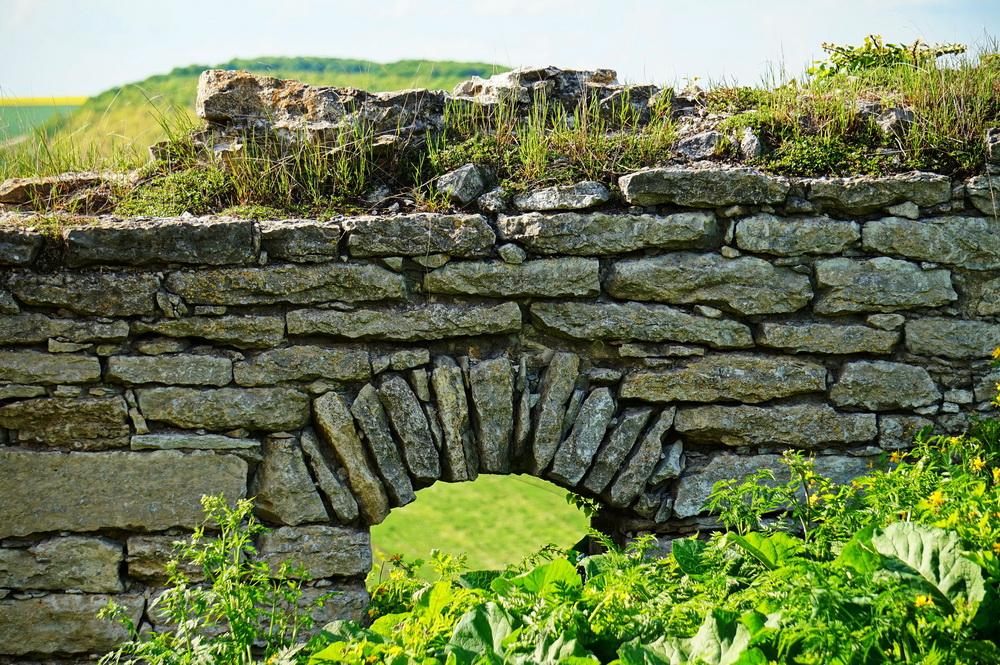
After the death of Adam Mykola Seniavskyi in 1726, Sataniv passed through his daughter Sofia to her husband August Stanislav Chartoryskyi, the Russian governor. Fairs have been held annually in Sataniv since 1744. The owner of the city asked the king for the right to hold 4 weekly fairs. Sataniv strengthens the reputation of a significant shopping center in Podillia.
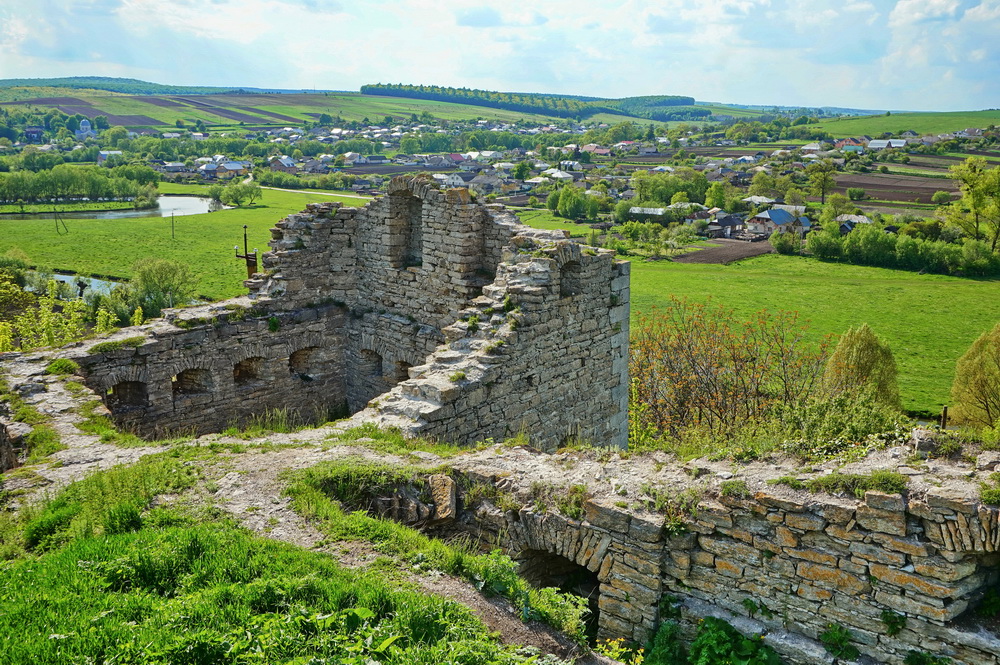
New history of the castle: Liubomyrskyi, Sangushko and Potockyi
In 1782, August Stanislav Chartoryskyi dies, and his daughter Elzhbeta Helena Anna brings Sataniv into the dowry for her husband, the great crown marshal Stanislav Liubomyrskyi. In 1793, after the next partition of the Commonwealth, Sataniv became part of the Russian Empire, and by the beginning of World War II it became a border town.
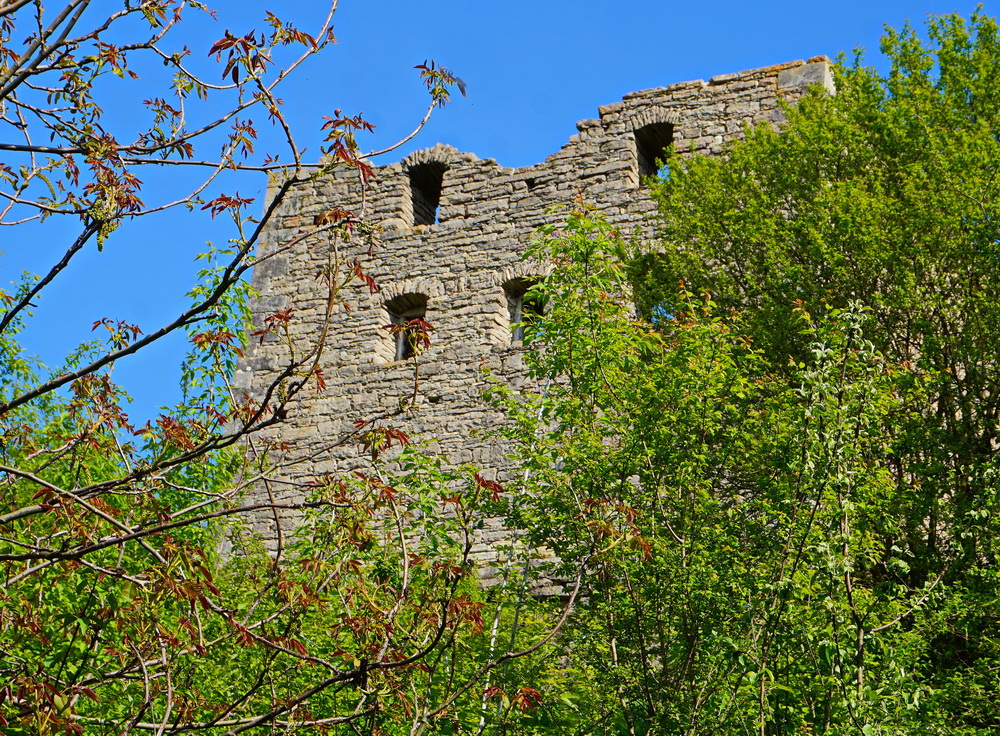
In 1816, Sataniv passed to the daughter of Elzhbeta Oleksandra Liubomyrska, who was married to Stanislav Kostka Potockyi. The city was inherited by their son Oleksandr Stanislav Potockyi, and later – Pototskyi’s daughter Natalia, wife of Prince Roman Adam Stanislav Sangushko. For participation in the Polish uprising of 1830-1831, the Russian government confiscated the estate of Sangushko and his daughter Maria Klementina in favor of the treasury.
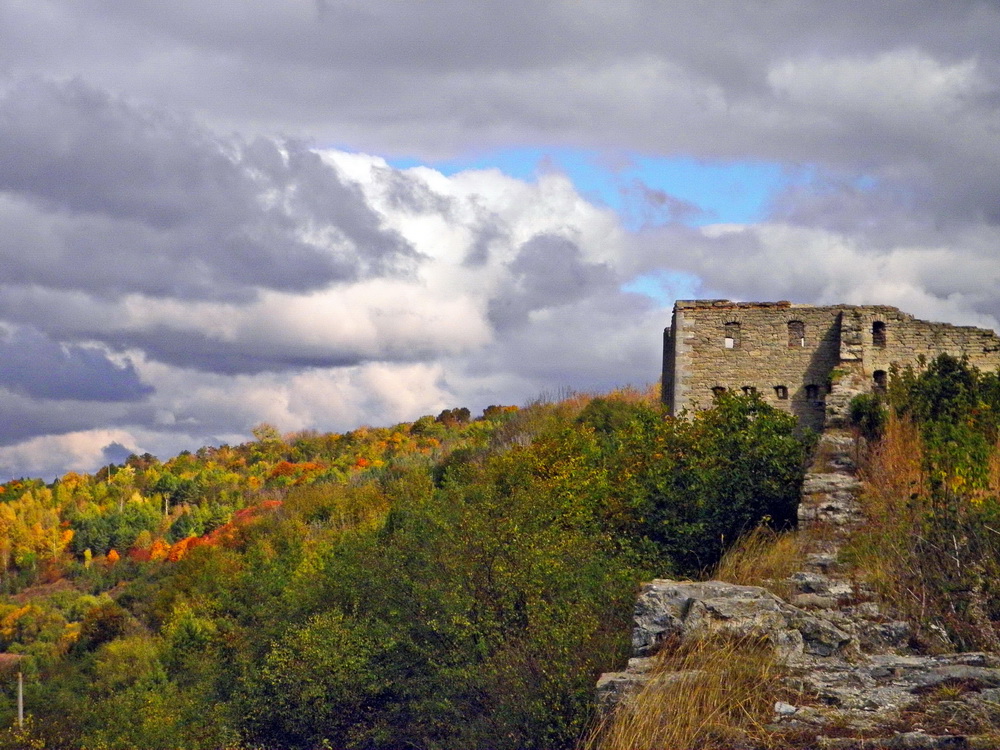
Factory castle
In 1899 a sugar factory was built on the territory of the castle, which caused irreparable damage to the fortress, because it used the walls as limestone in the production of sugar. The factory belonged to a joint-stock company, which included the owner of Sataniv Countess Clymentyna Tyshkevych, as well as industrialists Prushynskyi, Brockley and others. The director of the factory, Wilhelm Mykhailovych Brockley belonged to the business elite of Russia in 1914.
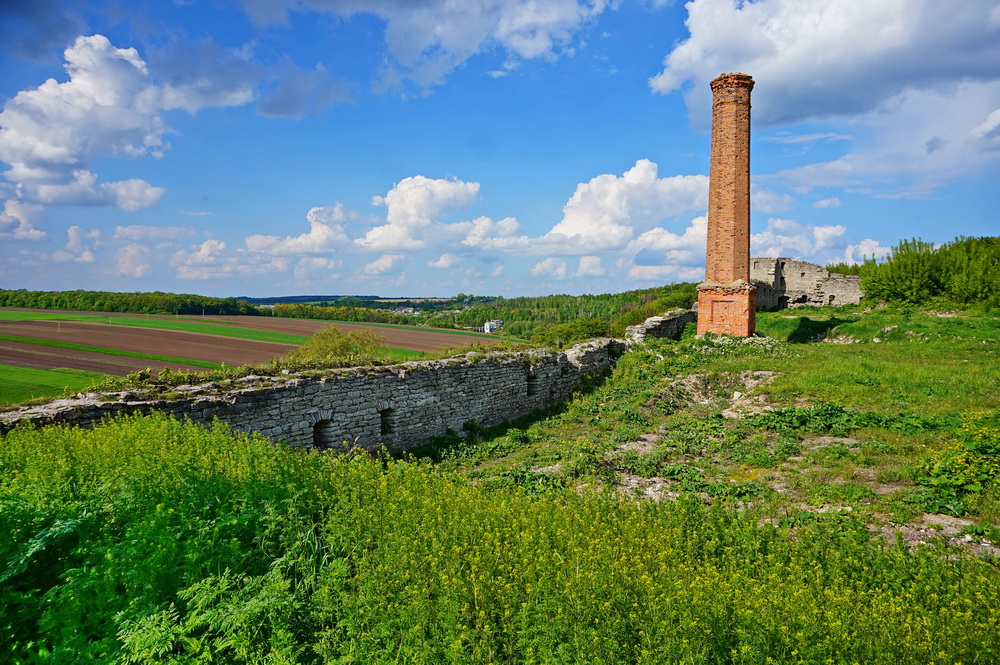
The factory ceased to exist in 2002, and its buildings began to collapse. In August 2009, at about 2 am, one of the structures of the sugar factory collapsed. The total area of the ruin, which was formed as a result of the collapse, reached 600 square meters.
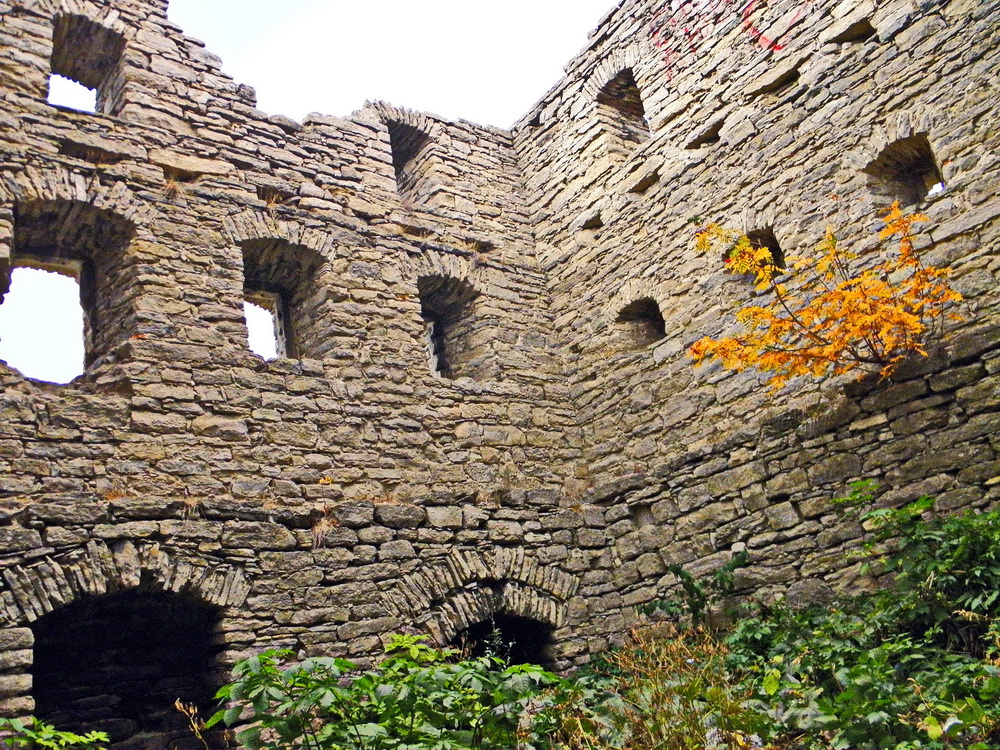
Significant fragments of the castle walls and two pentahedral corner towers overlooking the Zbruch river have survived to this day. The faceted towers, connected by defensive walls, have survived to a height of two or three tiers. The average wall thickness is about 1.5 m.

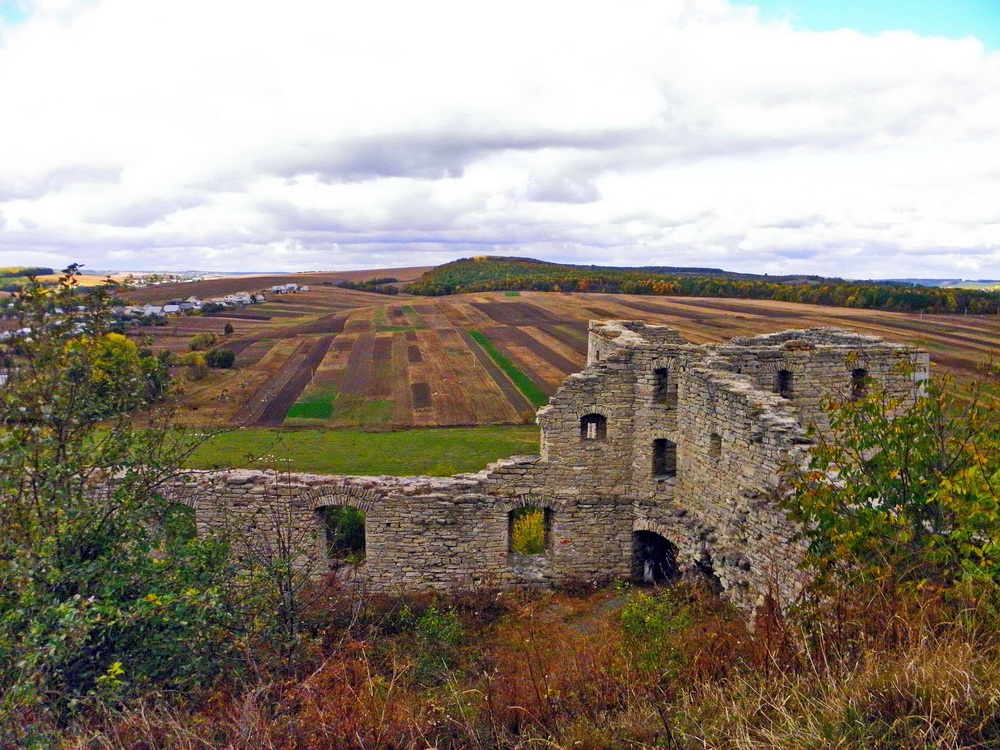
Zbruch
Zbruch is a small but important river in the history of Ukraine. Once it divided the empires: Austrian and Russian, and then – Poland and the USSR. Today it is the border between Khmelnytskyi and Ternopil regions. But even today one can feel a little that Zbruch still remains a “little border” – a mental line between Western and Greater Ukraine.
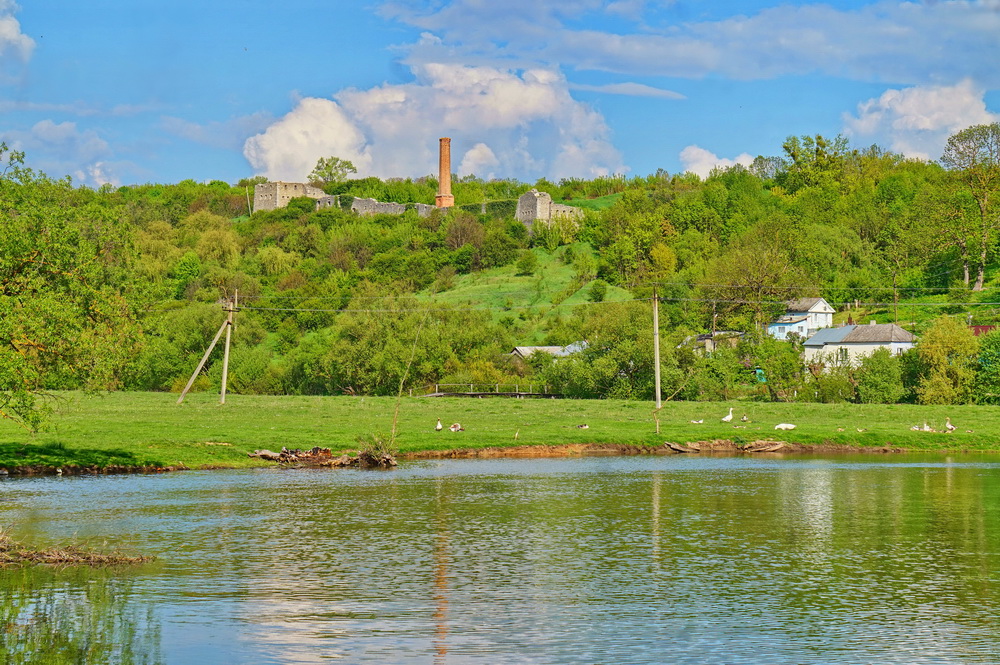
In the valley of Zbruch near Sataniv – is one of the best landscapes in Podillia. Sataniv’s castle rises on the high left bank. Cows and many geese graze on the gentle right bank. A wooden bridge is in between. Everything looks very archaic and pastoral.
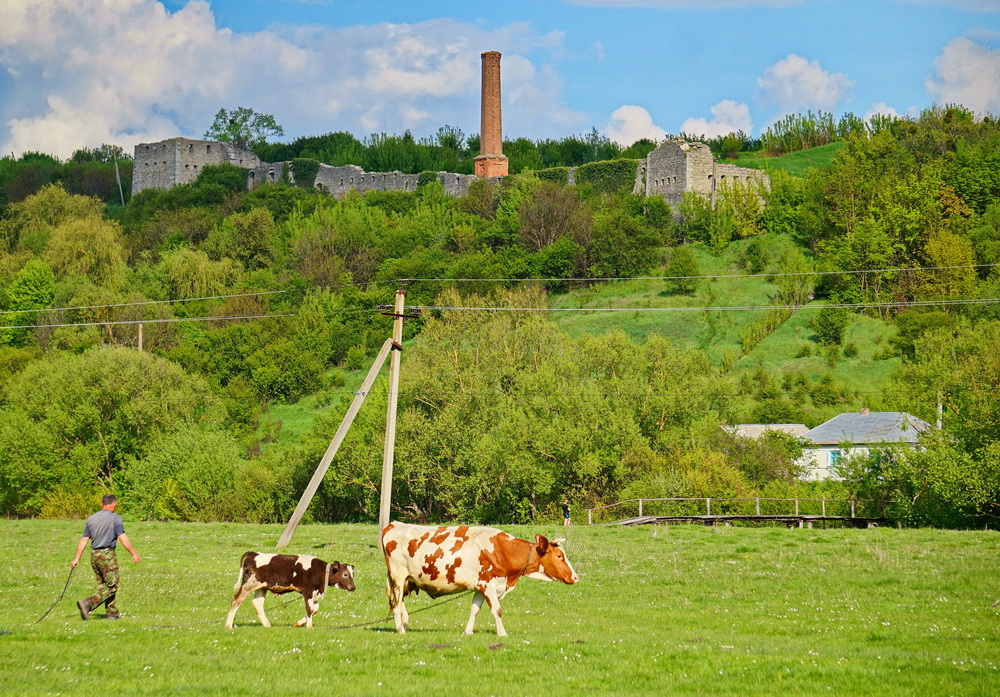
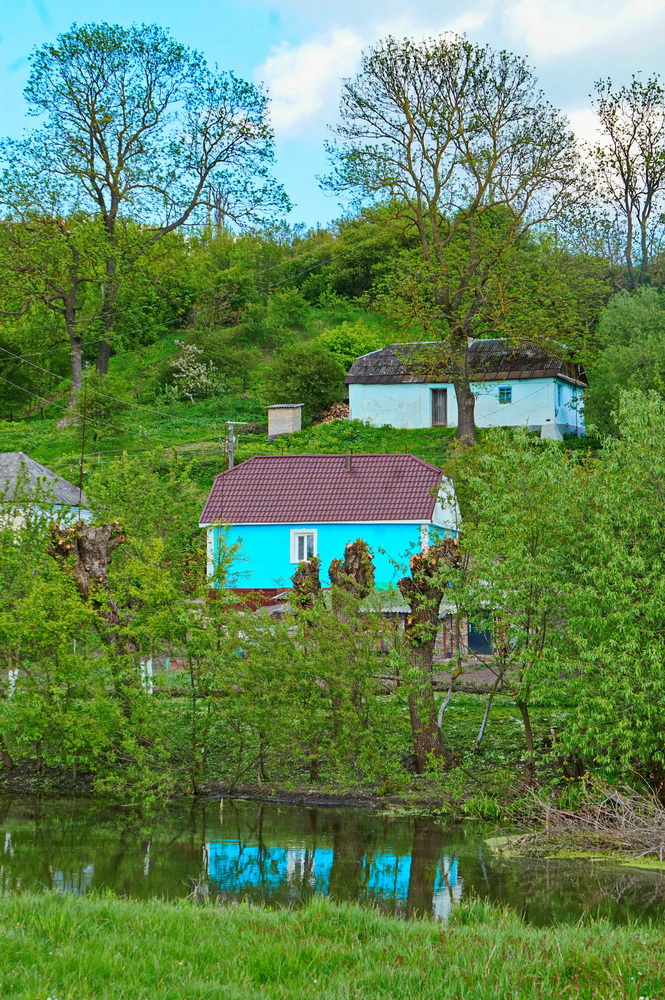
View of the Zbruch valley and the village of Kalaharivka, Ternopil region:

Zbruch and the castle:
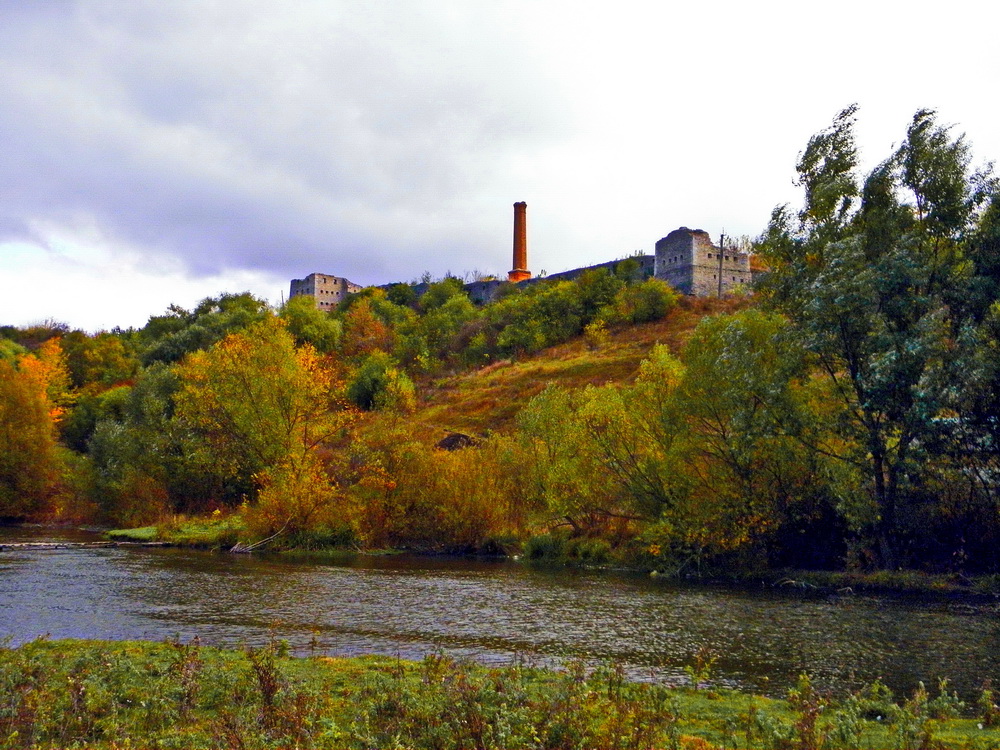
The bridge across the Zbruch:
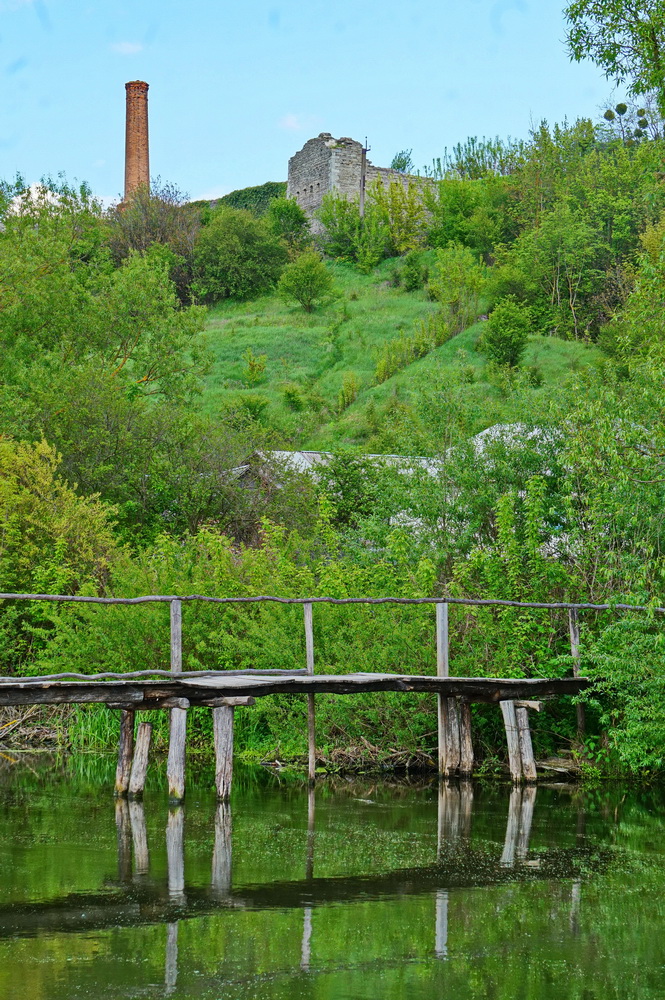
They named Gusiatyn (from the ukrainian word goose) the wrong city 🙂



Zbruch Canyon:
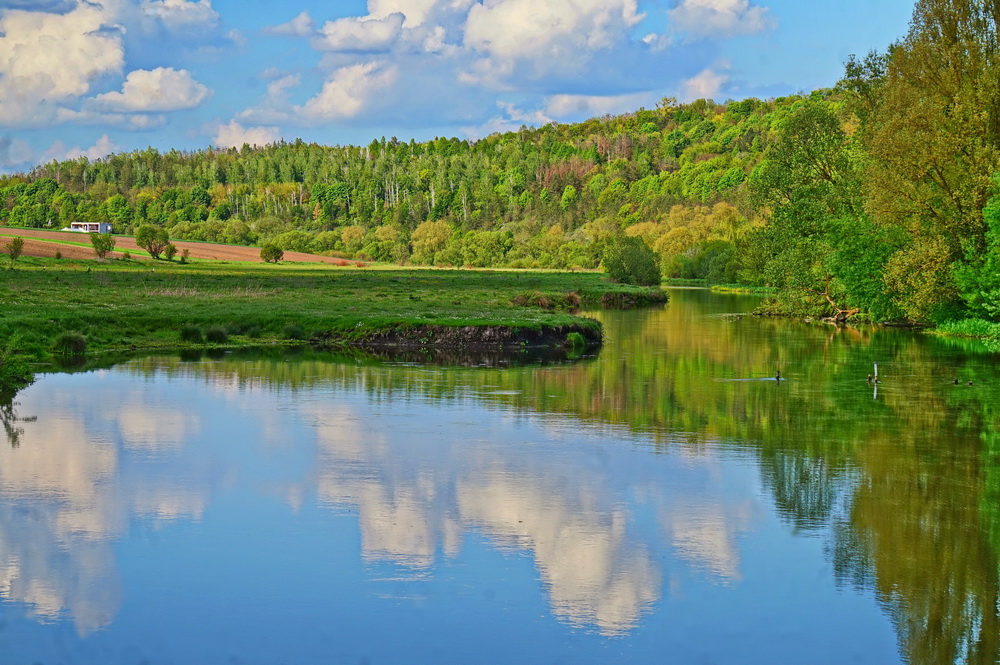
The canyon looks especially good in autumn, when its “walls” are lit with orange and red lights of autumn leaves.

The Synagogue and the Jews
In 1436, King Vladislav III granted Sataniv Magdeburg (German) law. Due to the acquisition of the city status, Sataniv turns into a significant handicraft center of Podillia. A significant role in this was played by the Jews who moved to Podillia from different parts of Europe. Two thirds of the residents of Podillia’s townships, including Sataniv were Jews. Mostly they were artisans and merchants.
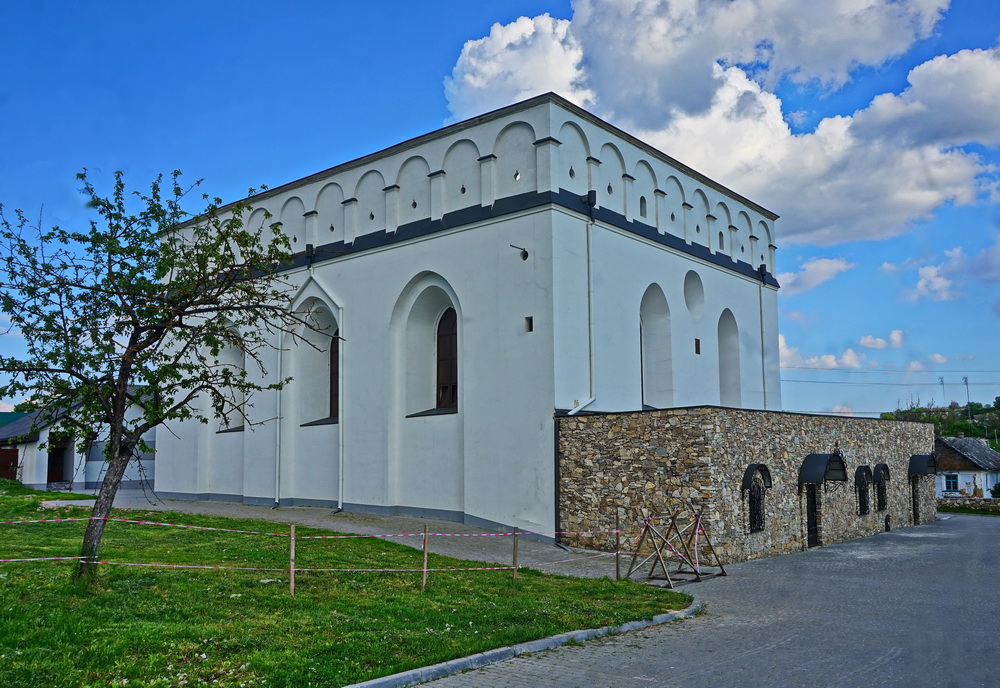
In 1514 (according to other sources – in 1532) the Jews built a stone synagogue in Sataniv, which is considered one of the oldest Jewish religious buildings that has survived in Ukraine. A chemical analysis of the solution made in 1992 suggests that the bell tower was built in the middle of the 17th century.

The Sataniv synagogue belonged to the fortification type synagogues, which were built according to the rules of fortification architecture. The parameters of the synagogues were clearly limited by the conditions introduced by the Christian owners of the region. In no case could they be higher than the top of the churches. The Sataniv synagogue was built in a typical Renaissance style, and it truly looks like a small defensive castle.

The walls of the synagogue are fortified with buttresses, and the thick walls are carved with late Gothic windows. The synagogue facades are Renaissance-style attic with loopholes. Most likely there was a battle tier here. On both sides, the low-ceiling rooms of the cheder (schools for boys) and the prayer hall for women were added to the main volume of the building.
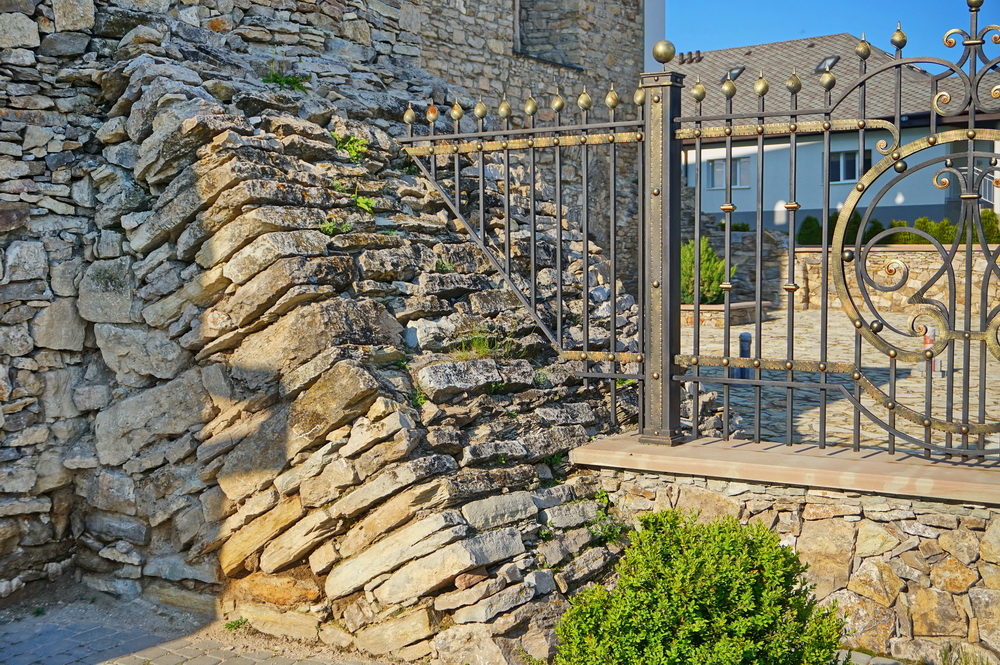
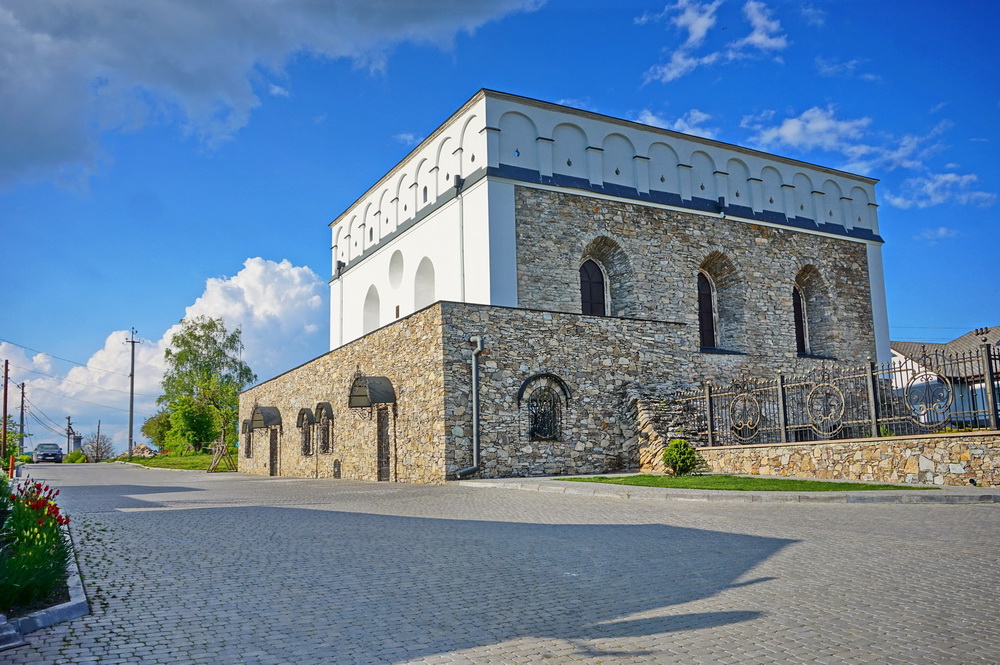
The main building of the synagogue is the high main hall. It is covered with semicircular vaults with lancet stripping. Traces of sculpture and wall paintings have been preserved in the interior. In the 1960s and 1970s, the former synagogue housed a grain warehouse. Due to the sharp temperature drop and high humidity, almost all the plaster fell off.
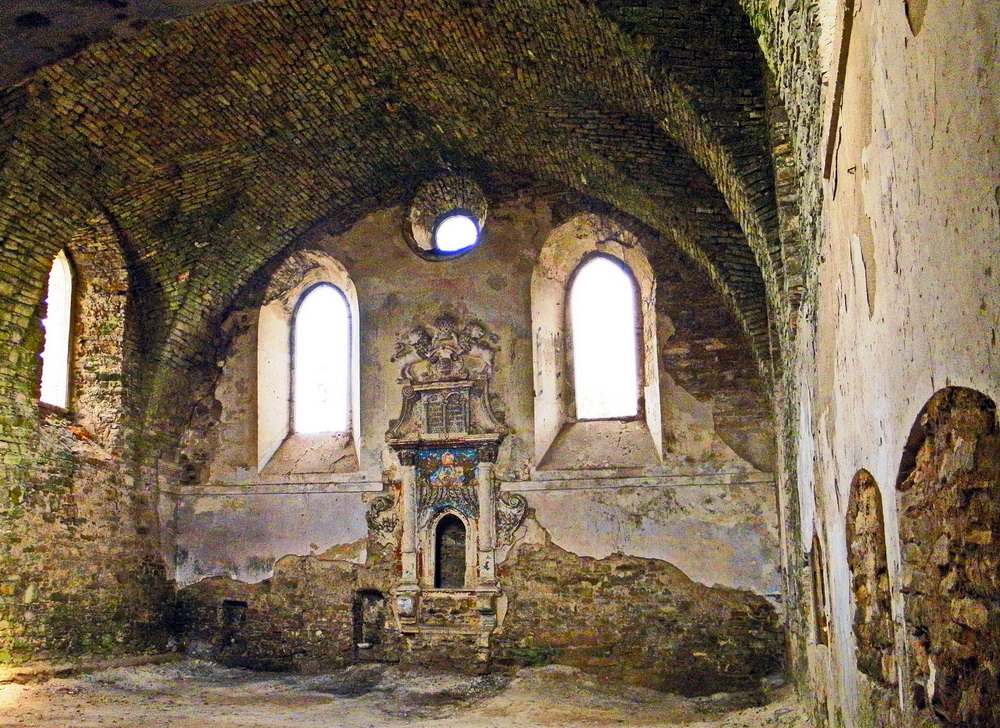
Main hall after restoration:


In 2015, the synagogue was completely renovated and lost its archaic appearance. The adjacent territory and the area in front of the shrine were also streamlined.
